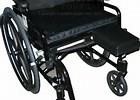What Happens Next?
Information for new amputees, their family and carers.
Amputee Rehabilitation Pathway:
- Discharge from Hospital – Referred to outpatient Physiotherapy and Limb Fitting Centre
- Begin Rehab at local Centre. – (approx. 1-2 weeks post discharge) This includes Scar and Wound management, Stump Shrinkage, Support with managing Phantom Limb sensation management, falls education, residual foot care, muscle strengthening exercises, muscle stretching exercises, early walking aid practice in parallel bars, support with managing your daily tasks and exploring adaptations at home
- Assessment at Limb Fitting Centre – (approx. 2-3 months post amputation) Undertaking amputation rehabilitation is a big physical task and not everyone is able to succeed. In order to be fitted with a prosthetic limb you must be able to:
- stand up in parallel bars for 10 minutes
- not have issues with tight muscles in hips and knees
- have good strength in arms and legs
- no wound issues
- pain managed
- stump a good size and shape
- good general health so that you can tolerate prosthetic use
- have good previous mobility levels, this may indicate if walking is possible
- demonstrate your ability to use a prosthesis safely by using early walking aids safely
- transfer independently
This assessment lasts approx. 4-5 hours.
If the Limb Fitting Centre team feel that you may manage and benefit from using a prosthetic limb then you will proceed to be cast and a prosthetic limb is made for you (this takes approx. 3 weeks)
Continue Rehab – If you are not suitable for a limb, the focus will be on helping you to achieve as much independence as possible without a prosthetic leg. Once this is achieved you will be discharged to continue independently at home or have a community rehab team takeover your care.
If you receive a limb, Prosthetic rehabilitation will begin – this can take up to a year depending on the person and your goals. In conjunction with your Physio, you will set goals and work towards them. Initially rehab may feel quite slow while you learn how to put the prosthesis on and off, how to manage the changing size of your stump and you may be asked not to walk at home until your therapist feels you are safe.
Wheelchairs:
Until you are able to use a prosthetic leg safely and independently you will be asked to continue using your wheelchair as your main mobility aid. We ask that you DO NOT hop with crutches or walking sticks. This increases the pressure on your remaining leg and can lead to damage in the foot, ankle, knee or hip. If you injury your remaining leg it could led to bigger health issues especially if you have a compromised vascular (blood flow) system or are diabetic and struggle with feeling in your foot.
When using the wheelchair:
- Always use a pressure cushion
- Always use your Stump board if issued with one:

- It helps reduce swelling in your stump so you fit in the prosthesis correctly
- You should also be wearing your Juzo sock all day, remove at night
- Ensure the brakes are on when you are not moving
- Remove the footplate when transferring onto another surface – it is a trip hazard that is easily avoided
Mental Health Support:
- Having amputation and then adjusting to a change in your abilities and function from prosthetic use can have an impact on your mental health
- If you are struggling with this try contacting your GP to refer you to a wellbeing service which can sign post and send onwards referrals to the correct services that can help you like psychology input via telephone
- There are various amputee charities who can also offer support and interactions with other amputees, these include:
- Steel Bones
- Limbless Association
- LimbPower
- Amputee Coalition – Learn about amputation & prosthetic care & request support for people living with limb loss, their families, caregivers and clinicians who care for amputees. (amputee-coalition.org)
- Talk to your limb fitting centre about accessing support and we hold different events for patients throughout the year
